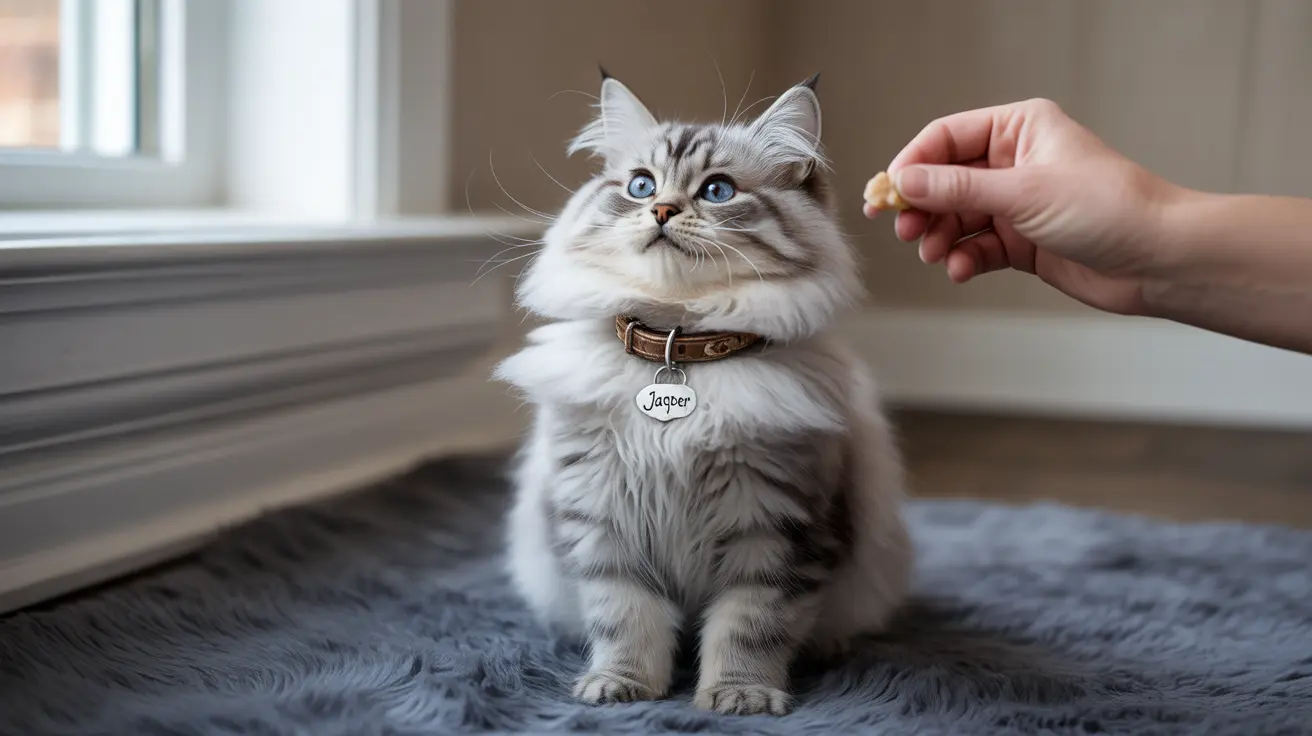Think cats can't be trained? Think again! Teaching tricks to your cat isn't just possible - it's an enriching activity that strengthens your bond and provides vital mental stimulation. With the right approach and positive reinforcement techniques, your feline friend can master an impressive array of tricks while having fun in the process.
In this comprehensive guide, we'll explore proven methods for teaching your cat new tricks, from basic commands to advanced performances. Whether you're a new cat parent or looking to expand your kitty's repertoire, you'll discover everything you need to start your training journey successfully.
Getting Started with Cat Training Basics
Before diving into specific tricks, it's essential to understand the fundamental principles of cat training. Success begins with creating the right environment and mindset for both you and your cat.
Setting Up for Success
Choose a quiet, familiar space for training sessions where your cat feels comfortable and secure. Remove potential distractions like toys, other pets, or loud noises. Keep high-value treats readily available, and ensure your cat is in a receptive mood - typically, before regular mealtimes works best.
Essential Training Tools
- A clicker for marking desired behaviors
- Small, easily consumable treats
- A target stick (optional)
- Plenty of patience
Simple Tricks to Start With
The Touch Command
Start with the "touch" or targeting command - it's the foundation for many more complex tricks. Hold out your finger and wait for your cat to naturally investigate it. The moment their nose touches your finger, click and reward. Soon, they'll associate the touch with treats, and you can add a verbal cue.
Teaching "Sit"
The classic "sit" command is often easiest for cats to learn. Hold a treat slightly above your cat's head, moving it slowly backward. As they follow the treat with their eyes, they'll naturally sit to maintain visual contact. Click and reward the moment their bottom touches the ground.
Advanced Training Techniques
Clicker Training Mastery
Clicker training accelerates learning by precisely marking the desired behavior. Start by creating a positive association - click and immediately treat several times until your cat connects the sound with rewards. Then use the clicker to mark successful trick attempts.
Shaping Complex Behaviors
For more elaborate tricks, use "shaping" - rewarding progressively closer approximations of the desired behavior. This method works well for teaching tricks like "roll over" or "jump through hoops."
Maintaining Training Progress
Consistency is key to successful cat training. Keep sessions short (3-5 minutes) but frequent, practicing several times daily. Always end on a positive note, even if your cat hasn't mastered the trick yet. This builds confidence and maintains enthusiasm for future sessions.
Common Training Challenges
Don't get discouraged if your cat seems uninterested or progress is slow. Every cat learns at their own pace. If your cat loses interest, try:
- Using more enticing treats
- Shortening training sessions
- Training before meals when motivation is higher
- Switching to a quieter location
Frequently Asked Questions
What are some easy tricks I can teach my cat using positive reinforcement?
The easiest tricks to start with are "touch," "sit," and "come." Use treats and clicks to reward your cat for performing these basic behaviors, gradually adding verbal cues as they become more consistent.
How do I use clicker training effectively to teach my cat new tricks?
Start by "charging" the clicker - clicking and treating repeatedly until your cat associates the sound with rewards. Then use the clicker to mark exact moments when your cat performs desired behaviors, followed immediately by treats.
What are the best rewards to motivate my cat during trick training?
Small, soft treats that can be eaten quickly work best. Try commercial cat treats, small pieces of cooked chicken, or tiny bits of tuna. Some cats also respond well to praise or brief play sessions as rewards.
How long should each cat training session be to keep my cat engaged?
Keep training sessions short - 3 to 5 minutes maximum. Multiple brief sessions throughout the day are more effective than one long session and help maintain your cat's interest and focus.
Can teaching tricks help reduce unwanted behaviors like scratching or excessive meowing?
Yes! Trick training provides mental stimulation and positive attention, which can significantly reduce boredom-related behaviors like excessive scratching or meowing. It also gives cats appropriate outlets for energy and attention-seeking behaviors.
Remember, training your cat should be an enjoyable experience for both of you. With patience, consistency, and positive reinforcement, you'll be amazed at what your feline friend can learn. Start with simple tricks and gradually work your way up to more complex behaviors as your cat's confidence and skills grow.






